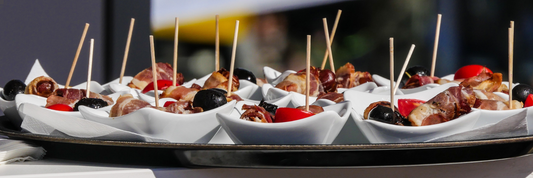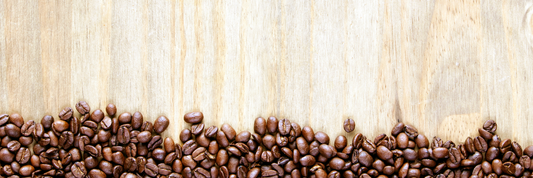When it comes to choosing dinnerware for your home or restaurant, melamine dinnerware is one of the great choices. But what exactly is melamine dinnerware and why should you consider using it? Let's explore the benefits of this versatile material in the blog below.
What Is Melamine Dinnerware?

Melamine dinnerware refers to tableware made from a type of plastic resin known as melamine. This material is a combination of melamine and formaldehyde compounds, which are heat- and chemical-resistant. Melamine dinnerware is designed to resemble ceramic in appearance but stands out due to its lightweight nature, chip-resistant properties, and affordability. Unlike traditional ceramics, melamine is often easier to handle and less prone to breaking, making it a popular choice for everyday use, especially in households with children or for outdoor dining.
Pros of Melamine Dinnerware
Melamine dinnerware has gained popularity for several reasons:
- Lightweight and Shatter-Resistant: Its light weight makes it easy to handle, particularly for children. Additionally, its shatter-resistant characteristics make it an excellent option for outdoor gatherings where accidents are more likely to occur.
- Budget-Friendly: Founded on the principle of affordability, melamine dinnerware is generally less expensive than its ceramic counterparts. This accessibility allows families to invest in a diverse range of colors and patterns without breaking the bank.
- Variety of Designs: Available in numerous colors and patterns, melamine dinnerware can complement any table setting or personal style, enhancing everyday dining experiences.
- Dishwasher-Safe: Maintenance becomes easier with melamine dinnerware, as it is typically safe to wash on the top rack of a dishwasher, allowing for convenient cleanup after meals.

Advantages and Disadvantages of Melamine Dinnerware
Melamine Dinnerware Benefits
- Food-Safe Plastic: The FDA approves melamine as a safe plastic for serving food.
- Mimics Other Materials: Lightweight melamine can be finished to look like real stoneware, china, or wood.
- Save on Costs: Melamine is difficult to break, chip, or scratch.
- Lightweight: Easy to carry and deliver.
- Temperature-Resistant: This chemical doesn't absorb the heat from plated foods, reducing accidental burns.
- Dishwasher Safe: Expedite clean-up and eliminate germs with dishwasher-safe melamine plastic.
- Offers Sustainable Options: Choose an eco-friendly melamine dinnerware line.
- Versatile Designs: Come in every color, shape, and style.
- Versatile Use: Can be used the same melamine dinnerware line in your dining room, patio, and poolside bar.
Melamine Dinnerware Risks
- When it comes to melamine, users may experience poison from leakage into foods.
-
Additionally, the fact that physicians still don't fully know about the effects of long-term melamine exposure. Animal studies are the primary source of most current research. Most current research comes from animal studies. They do know that some melamine poisoning signs include:
- blood in urine
- pain in the flank area
- high blood pressure
- irritability
- little to no urine production
- urgent need to urinate
Safety Concerns of Melamine

Is Melamine Dinnerware Safe?
While melamine dinnerware is generally safe for serving cold and room temperature foods, precautions must be taken with hotter items. The material is not microwave-safe; exposure to high temperatures can cause melamine to leach into food, raising potential health concerns. Therefore, it is advisable to avoid using melamine for hot soups, reheating food, or long-term storage of heated items.
What Do Health Experts Say?
Health experts have weighed in on the safety of melamine. The FDA maintains that melamine is safe for use under specific conditions, while the World Health Organization (WHO) warns against high levels of melamine exposure, which can be toxic. It is also advisable to avoid using scratched or damaged melamine products to mitigate the risk of leaching.
Melamine Dinnerware vs Other Materials
|
Material |
Microwave Safe |
Eco-Friendly |
Durability |
Weight |
|
Melamine |
❌ No |
🚫 Not Eco |
✅ Very strong |
⚖️ Very light |
|
Ceramic |
✅ Yes |
♻️ Yes |
❌ Fragile |
⚖️ Medium |
|
Stainless Steel |
✅ Yes |
✅ Reusable |
✅ Durable |
⚖️ Medium |
|
Glass |
✅ Yes |
✅ Yes |
❌ Breakable |
⚖️ Heavy |
|
Compostable (e.g. bamboo) |
✅ Varies |
✅ Yes |
❌ Lower strength |
⚖️ Light |
When comparing melamine dinnerware to other materials, its lack of microwave safety and eco-friendliness becomes evident. However, its lightweight and durable nature makes it an attractive option for many households.
Eco-Friendly Alternatives to Melamine Dinnerware

For those prioritizing sustainability, several eco-friendly alternatives to melamine dinnerware are available:
- Bamboo Fiber Dinnerware: Biodegradable and stylish, bamboo dinnerware provides a natural aesthetic while being kinder to the environment.
- Wheat Straw Dishes: Made from plant-based materials, wheat straw dishes are lightweight and eco-friendly.
- Stainless Steel: This option is reusable, durable, and offers a longer lifespan, making it a practical choice for both families and foodservice settings.
- Compostable Paper Pulp or Bagasse Plates: Ideal for single-use events, these plates offer a sustainable solution without compromising quality.
While melamine dinnerware meets various needs, exploring these eco-friendly alternatives can contribute to a more sustainable lifestyle.
How to Care for Melamine Dinnerware Safely
To ensure the longevity and safety of melamine dinnerware, consider the following care guidelines:
- Avoid microwave and oven use: High temperatures can cause harmful chemicals to leach.
- Don’t use with very hot or acidic foods: This precaution helps prevent leaching.
- Wash on the top rack only (dishwasher): This protects the melamine from heat exposure in the dishwasher.
- Discard any chipped or scratched items: Damaged dinnerware can pose health risks.
By adhering to these simple care instructions, users can maximize the safety and lifespan of their melamine dinnerware.
Conclusion
Melamine dinnerware excels in durability and affordability, making it an appealing option for everyday use. However, as concerns over environmental sustainability and health risks arise, it may not be the best long-term choice for eco-conscious consumers. For those dedicated to sustainable living, exploring greener alternatives could be the way forward.




